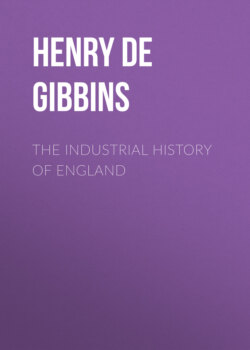Читать книгу The Industrial History of England - Henry de Beltgens Gibbins - Страница 9
На сайте Литреса книга снята с продажи.
§ 2. Economic condition of the country as shown in Domesday
Оглавление—From it we may gather the following few facts {11} as to the economic condition of England about the time of the Norman Conquest. The population numbered about 2,000,000, three-fourths of whom lived by agricultural labour, the remaining fourth being townsfolk, gentry, and churchmen. The East and South, especially the county of Kent, were the best tilled, richest, and most populous parts of the country. “The downs and wolds gave fine pasturage for sheep, the copses and woods formed fattening grounds for swine, and the hollows at the downs’ foot, the river flats, and the low, gravel hills, were the best and easiest land to plough and crop. Far the largest part of the country was forest—i.e. uncleared and undrained moor, wood, or fen.”8 The chief towns were London, Canterbury, Chester, Lincoln, Oxford, York, Hereford, and Winchester; but these were trading centres rather than seats of manufacturing industry. A small foreign export trade was done in wool and lead, the imports being chiefly articles of luxury. There were 9250 villages or manors in the land; in these about three-fifths of each is waste—i.e. untilled, common land—one-fifth pasture, and one-fifth arable.
8 V. Industry in England, p. 69.
